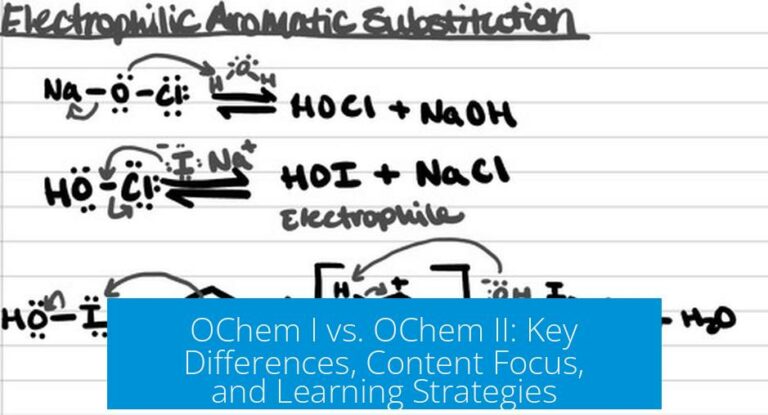What is the Best Solvent for Fully Cured Silicone?

Fully cured silicone is not soluble in conventional solvents. The best approach involves either mechanical removal or the use of specialized chemicals that only soften or swell the material. Industrial base baths can depolymerize silicone but require strict safety measures. No common solvent can fully dissolve cured silicone; mechanical abrasion remains the most effective and practical method.
Understanding Fully Cured Silicone
Silicone sealants and rubbers cure by forming strong cross-links between polymer chains. Once fully cured, these linkages create a stable three-dimensional network. This network is highly resistant to solvents and typical chemical breakdown. Silicone oils or lubricants differ, but cured silicone elastomers become insoluble.
Because of this cross-linked structure, silicone cannot be dissolved by common solvents. Instead, solvents may only affect the surface by swelling or softening it, which can facilitate physical removal but not complete dissolution.
Why Solubility Is Not Achievable

- Fully cross-linked polymers resist penetration and solvation by organic solvents.
- No household or standard laboratory solvent effectively breaks silicone’s cross-link bonds under normal conditions.
- Strong chemicals that could attack silicone are often hazardous or corrosive.
Therefore, the term “best solvent” is somewhat misleading in the context of fully cured silicone. Instead, solvents may serve as aids for softening or weakening the cured silicone prior to mechanical removal.
Mechanical Removal: The Most Practical Solution
The primary recommendation for removing cured silicone is a mechanical approach. Methods include scraping, sanding, abrasion, or cutting. Mechanical removal avoids extensive chemical use and exposure to hazardous substances.
Common Mechanical Techniques

- Scraping: Using a razor blade, putty knife, or dedicated silicone scrapers.
- Sanding: Sandpaper or abrasive pads can wear away silicone residue.
- Abrasion with brushes: Circular wire brushes on tools like angle grinders can remove tougher residues.
- Steel wool: Effective for small patches or delicate surfaces.
These methods are straightforward and cost-effective. Mechanical removal can be combined with solvents that weaken adhesion to surfaces, making scraping easier.
Chemical Agents That Assist Mechanical Removal
While no solvent dissolves cured silicone, some can swell or weaken it, improving mechanical removal efficiency.
| Solvent/Chemical | Effect on Silicone | Notes |
|---|---|---|
| Acetone | Softens and swells silicone | Widely available; use with care on sensitive surfaces |
| Ethyl Acetate (MEK Substitute) | Swelling agent; facilitates removal | Easily available in hardware stores; safer than MEK |
| WD-40 (and similar oils) | Weakens bond to surfaces; does not dissolve | Good for loosening silicone from glass or metal |
| Tetrahydrofuran (THF) | Causes swelling; eases scraping | Industrial solvent; access may be restricted |
| Acids stronger than vinegar | Can weaken silicone but are hazardous | Not recommended for typical household use |
These solvents do not dissolve silicone but assist mechanical methods by softening or weakening the cured elastomer. Acetone and ethyl acetate are popular for this role due to availability and efficiency.
Using Oils like WD-40

WD-40 and similar lubricating oils function by disrupting the bond between silicone and the substrate. While they don’t break down silicone chemically, they reduce adhesion. This can help pry silicone layers loose or make scraping easier.
Because WD-40 is an oil-based formula, alternatives marketed as silicone removers or penetrating oils may offer similar benefits.
Chemical Depolymerization: Industrial Approaches
In laboratory or manufacturing settings, fully cured silicone can be chemically broken down by treating it with a strong alkaline bath. This method aims to depolymerize the silicone polymer chains.
Base Bath Composition and Use

The typical base bath consists of:
- 10% potassium hydroxide (KOH) or sodium hydroxide (NaOH)
- 70-80% isopropyl alcohol (IPA)
- 10-20% water
Silicone placed in this strong caustic mixture undergoes chemical breakdown over a period exceeding 24 hours. The process involves hydrolysis of siloxane bonds, effectively dissolving the cured material.
Important Safety Considerations
- Mixing KOH or NaOH with IPA can generate heat rapidly; controlled mixing is essential.
- The bath is highly caustic, posing risks to skin and eyes.
- Personal protective equipment (PPE) such as gloves and face protection is mandatory.
- Waste generated is hazardous and disposal must comply with regulations.
- This method is inappropriate for casual or household use.
- Thorough cleaning post-treatment is vital to eliminate hazardous residues.
This approach suits industrial cleaning or recycling processes where solvent disposal and safety infrastructure exist.
Summary of Solvent and Removal Options

| Method | Effectiveness | Practicality | Safety Considerations |
|---|---|---|---|
| Mechanical Removal (scraping, sanding) | Highly effective | Practical, low cost | Minimal risk, requires caution to avoid surface damage |
| Solvent Aids (Acetone, Ethyl Acetate, WD-40, THF) | Softens and weakens but does not dissolve | Accessible; improve mechanical removal | Flammable, use in ventilated spaces; skin contact avoidance recommended |
| Strong Acid Solutions | Can weaken cured silicone | Not recommended at home | Hazardous; risk of burns and damage to surfaces |
| Base Bath (KOH/NaOH with IPA) | Dissolves cured silicone chemically | Limited to industrial labs | Highly caustic; PPE and waste management mandatory |
Final Recommendations
- For home or routine tasks, mechanical removal is the best option. Scraping combined with acetone, ethyl acetate, or oils like WD-40 can facilitate the process.
- Avoid attempting to dissolve cured silicone using strong acids or industrial base baths. Such chemicals pose significant health and safety risks.
- Use commercial silicone removers designed for caulk or sealant removal. These formulations often combine solvents and penetration agents to ease removal.
- Wear proper protective gear and ensure good ventilation when handling solvents. Follow product instructions diligently.
- Consider alternative materials like latex sealants for applications requiring easier removal.
Key Takeaways
- Fully cured silicone cannot be dissolved by common solvents.
- Mechanical methods such as scraping or sanding are the most effective and practical removal techniques.
- Solvents like acetone, ethyl acetate, THF, or oils can soften and weaken silicone to ease mechanical removal but do not dissolve it.
- Strong alkaline base baths (KOH/NaOH with IPA and water) can chemically depolymerize silicone but require industrial settings and strict safety protocols.
- Safety precautions must be observed when using chemical solvents and caustic solutions.
What is the Best Solvent for Fully Cured Silicone?
Short answer: Fully cured silicone doesn’t dissolve with any common solvent. You need either intense chemical treatments like caustic base baths or, more practically, mechanical removal aided by solvents that swell or weaken the material. Let’s unpack why this is the case and what you can realistically do to tackle that stubborn silicone residue.
Imagine you have hardened silicone caulk on your bathroom tile or glass window. You try your usual household solvents—acetone, rubbing alcohol, wd-40—and get nowhere. Why? Because once silicone fully cures, it gains a resilient, cross-linked polymer structure that just won’t melt away. It’s like trying to dissolve hardened rubber bands in water. Not gonna happen.
Why Fully Cured Silicone Is a Tough Nut to Crack
Fully cured silicone is a three-dimensional network of covalent bonds forming cross-links. Unlike uncured silicone or silicone oils, these bonds don’t just break apart by soaking in solvents. You can’t just dunk it, wipe it, or spray it with typical chemicals and expect it to liquefy.
In plain terms, no normal solvent “dissolves” cured silicone. It’s chemically resistant to most things you’d find under your kitchen sink. Even strong solvents only cause swelling or softening temporarily. They don’t break the chemical bonds holding the polymer together.
So, what happens when you need to get rid of old silicone sealant or residue?
Mechanical Removal: Your Best Everyday Strategy
The simplest and safest advice: scrape, sand, or abrade the silicone. Grab a razor blade, scraping tool, or even steel wool. A bit of elbow grease often beats chemical wrestling matches.
For instance, people have removed silicone residue on kitchen tiles by using a circular wire brush attached to an angle grinder. That’s not subtle, but it works and is often faster than waiting for chemicals.
To assist mechanical removal, you can use some solvents like 91% isopropyl alcohol (IPA) as a rinse liquid to clean and help remove residue. WD-40 or similar specialty silicone removers can weaken the bond between silicone and surface, making scraping easier.
But don’t expect WD-40 to melt silicone; it just helps loosen it. Think of these as helpers, not miracle workers.
Solvents That Soften or Weaken Silicone (But Don’t Dissolve It)
- Acetone: Causes silicone to swell. This can soften silicone, easing removal.
- Ethyl Acetate (MEK substitute): Available in many hardware stores as “MEK Substitute,” this is a favorite for swelling silicone safely. Doesn’t dissolve but assists mechanical removal.
- WD-40 and oils: They don’t dissolve the polymer but weaken the bond to the surface.
- Tetrahydrofuran (THF): Harder to find but a strong contender. THF swells silicone and makes scraping easier.
- Acids stronger than vinegar: May weaken silicone but are hazardous and generally not worth the risk for home use.
In short, these solvents can temporarily change silicone’s texture, making manual removal easier, but they won’t liquefy or truly dissolve cured silicone.
Industrial Options: Caustic Base Baths for Real Dissolution
If you want full-on chemical dissolution, there’s one complex and hazardous method: caustic base bath. This uses a solution of potassium hydroxide (KOH) or sodium hydroxide (NaOH) mixed with isopropanol (IPA) and water.
This cocktail doesn’t just soften silicone; it depolymerizes it, chemically breaking the cross-linked chains. It takes time—usually more than 24 hours soaking—and careful handling.
| Base Bath Composition (approximate by weight) |
|---|
| 10% KOH or NaOH |
| 70–80% Isopropanol (IPA) |
| 10–20% Water |
This method is primarily used in laboratories or manufacturing due to the dangers involved:
- This bath heats up on mixing and can be caustic enough to burn skin.
- Proper personal protective equipment (PPE) such as gloves, goggles, and aprons is a must.
- The waste solution is hazardous and expensive to dispose of.
- Not recommended for casual or home use.
Safety first: if your skin feels slick or burned, rinse thoroughly with water. The base can degrade skin tissue.
Safety and Environmental Considerations
Using harsh solvents, acids, or caustic baths requires caution. Never ignore safety instructions. Always wear protective gloves and work in a ventilated area.
If you use chemical treatments, clean all residue thoroughly—especially if removing silicone near sensitive environments, such as aquariums or food preparation areas.
Remember, for some projects, switching to less stubborn sealants like latex-based caulks can save time and headache later.
Putting It All Together: What’s the Best Approach?
Wondering which method to try first? Here are practical steps depending on your situation:
- Mechanical removal: Start here. Use scraping tools or sanders to remove as much silicone as you can.
- Use solvents to assist: Apply ethyl acetate, acetone, or WD-40 to swell or weaken the silicone before scraping again.
- Repeat mechanical and solvent steps until silicone is gone.
- If all else fails and you have access: Consider a controlled base bath—but only in industrial or lab settings.
- Always clean the surface well after removal, ensuring no chemical residue remains.
Trying to tackle fully cured silicone is a balance between practicality, safety, and patience. You can’t just zap it with magic solvent — yet combining mechanical force with smart solvent use is surprisingly effective.
Final Thoughts:
Fully cured silicone is remarkably resilient and chemically resistant. It’s engineered to stay put, which means you need a strategic approach to remove it.
So next time you wrestle with old silicone caulk, remember: there’s no quick solvent fix. Instead, rely on good old-fashioned scraping, aided by solvents like ethyl acetate or WD-40. For the brave and equipped, industrial base baths exist but require caution and expertise.
Got silicone troubles? What’s the toughest job you’ve had removing it? Share your experience—and maybe your secret weapon—in the comments!
Q1: Can fully cured silicone be dissolved by any common solvent?
No. Fully cured silicone cannot be dissolved by common solvents. It is chemically cross-linked, making it insoluble in typical liquids. You can only soften or swell it, not dissolve it.
Q2: What solvents can help soften or weaken cured silicone?
Acetone, ethyl acetate (MEK substitute), tetrahydrofuran (THF), and oils like WD-40 can swell or weaken cured silicone. These solvents don’t dissolve it but can make it easier to remove mechanically.
Q3: Is there a chemical method to fully dissolve cured silicone?
Yes. A strong base bath made from KOH or NaOH mixed with isopropanol and water can depolymerize silicone. This takes 24+ hours and is very caustic, suited only for industrial or lab use.
Q4: What is the safest and most practical way to remove fully cured silicone?
Mechanical removal, such as scraping, sanding, or abrasion, is recommended. You can use solvents to soften the silicone first, but physical removal is usually the best approach.
Q5: What precautions should be taken when using chemical solvents on cured silicone?
Use proper safety gear and follow instructions closely. Strong acids or bases can be hazardous. Clean all residue thoroughly to avoid contamination, especially in sensitive environments.





Leave a Comment